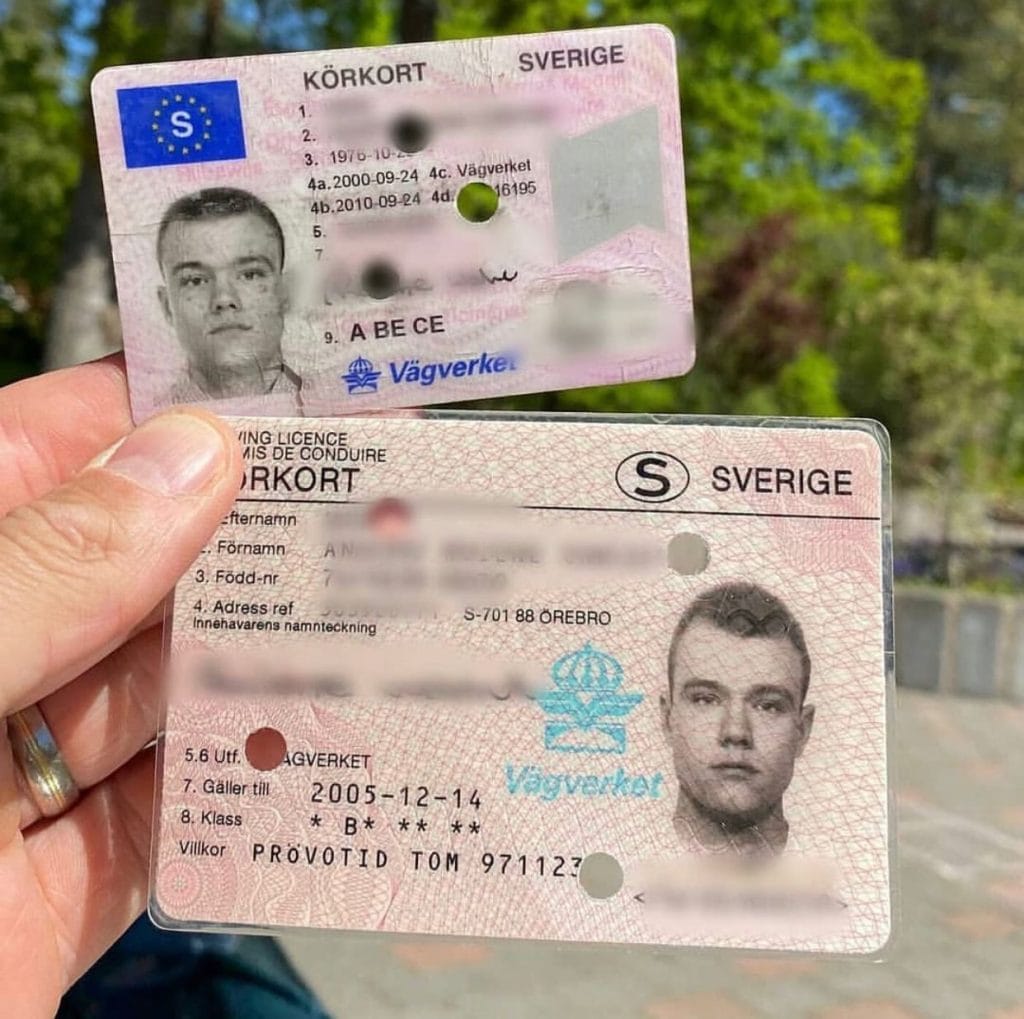
13
апреляA Intermediate Guide To Swedish Driving License Online

Navigating the World Without a Driver's License: Exploring Alternatives and Implications
In today's world, where movement is a cornerstone of everyday life, the concept of living without a driver's license might appear challenging. Nevertheless, for some people, the decision to pass up a driver's license is a conscious choice driven by various aspects, consisting of environmental concerns, expense, and individual choice. This short article delves into the alternatives to driving and the implications of living without a driver's license, supplying a thorough guide for those considering this way of life.
Comprehending the Decision
Picking not to have a driver's license is an individual decision that can come from several reasons. For some, it's a dedication to reducing their carbon footprint and promoting sustainable living. Others discover the expense of owning and preserving a car prohibitive, while some just prefer the convenience and liberty of other modes of transportation. Despite the motivation, living without a driver's license requires mindful planning and a desire to adjust.
Alternatives to Driving
Public Transportation
- Buses and Trains: Public transportation systems, such as buses and trains, are typically the most reliable and cost-effective alternatives. They are accessible in the majority of metropolitan locations and supply a structured method to browse cities and rural areas.
- Subway and Light Rail: In bigger cities, subways and light rail systems use quick and efficient travel, often bypassing rush hour and minimizing travel time.
Ride-Sharing Services
- Uber and Lyft: These popular ride-sharing apps offer on-demand transportation, making it easy to navigate without a car. They are especially helpful for late-night travel and in areas with restricted mass transit.
- Carpooling: Joining or forming carpool groups can reduce costs and environmental effect. Lots of neighborhood platforms and apps facilitate carpooling for regular commutes.
Bicycles and E-Scooters
- Bicycles: Cycling is a healthy and eco-friendly method to take a trip, particularly for much shorter ranges. Lots of cities have actually dedicated bike lanes and bike-sharing programs to motivate this mode of transport.
- Electric Scooters: E-scooters are a trendy and hassle-free choice for quick, short trips. They are often available through rental services in urban locations and can be a fun option to conventional modes of transportation.
Strolling and Jogging
- Walking: For falskt Körkort those residing in walkable neighborhoods, strolling is a simple and efficient method to remain active and navigate. It's free, needs no unique devices, and is excellent for the environment.
- Jogging: Similar to walking, running can be a healthy and low-cost way to travel, particularly for short ranges.
Electric and Hybrid Vehicles
- Electric Scooters and Bikes: For those who still want the convenience of an individual car however are concerned about the environment, electric scooters and bikes are a viable choice. They are low-maintenance and produce fewer emissions.
- Hybrid Cars: If the decision to prevent a driver's license is mainly due to environmental concerns, but the need for a car is unavoidable, hybrid cars offer a middle ground. They integrate traditional gas engines with electrical motors to decrease fuel consumption and emissions.
Telecommuting and Remote Work
- Work from Home: Many companies now provide remote work alternatives, permitting workers to work from home or Köpa A1 Körkort Online A1 Köpa A2 Körkort Online (visit the up coming website) other areas. This can considerably lower the need for day-to-day commuting and the associated expenses.
- Virtual Meetings: Technology has actually made it possible to conduct service conferences and other interactions virtually, more lowering the need for travel.
Ramifications of Living Without a Driver's License
Financial Savings
- Minimized Vehicle Costs: Not having a car indicates preventing costs such as car payments, insurance coverage, upkeep, and fuel.
- Public Transport Costs: While mass transit does have costs, they are usually lower than those associated with owning a car.
Environmental Impact
- Lower Carbon Emissions: By preventing the usage of personal cars, individuals can considerably minimize their carbon footprint, contributing to a more sustainable environment.
- Lowered Traffic Congestion: Fewer automobiles on the roadway can result in reduced traffic blockage, making travel more efficient for everyone.
Health Benefits
- Increased Physical Activity: Using alternatives like walking, jogging, and biking can improve physical health and psychological wellness.
- Lowered Stress: Avoiding the everyday hassles of driving, such as traffic and parking, can cause a more relaxed and trouble-free lifestyle.
Social and Community Engagement
- Community Connections: Relying on mass transit or ride-sharing services can foster a sense of community and social interaction.
- Support for Local Businesses: Walking or cycling to local organizations can help support the regional economy and minimize reliance on big, environmentally unfriendly corporations.
Legal and Practical Considerations
- Recognition Issues: In many nations, a driver's license functions as a main kind of identification. People without a license might require to carry alternative types of ID, such as a passport or state-issued ID card.
- Travel Restrictions: Without a driver's license, travel to remote areas or places with limited mass transit can be challenging. Planning ahead and using alternative transportation methods is vital.
FAQs
Q: How can I get around if I reside in a backwoods without a driver's license?
- A: In rural areas, alternatives like ride-sharing services, carpooling, and public transportation may be restricted. Consider joining community groups or Köpa C Körkort Online platforms to find local carpooling choices. Electric scooters and bikes can also be beneficial for much shorter ranges. Additionally, numerous backwoods have neighborhood transportation services that can be accessed for essential trips.
Q: Can I still take a trip globally without a driver's license?
- A: Absolutely. A driver's license is not needed for many international travel. However, you might require a passport or other kinds of recognition. For countries where driving is essential, you can rent a car with a valid driver's license or usage regional transport services.
Q: What are the best apps for discovering ride-sharing and carpooling options?
- A: Popular apps for ride-sharing consist of Uber, Lyft, and körkort till försäljning Bolt. For carpooling, Waze Carpool, Ridester, and Scoop are extremely advised. These apps typically supply real-time details on available rides and help connect you with chauffeurs heading in the same direction.
Q: How do I handle without a driver's license if it is required for many forms of identification?
- A: In lots of places, a state-issued ID card or a passport can act as a main kind of recognition. It's also an excellent idea to bring several kinds of ID, such as a credit card or a citizen registration card, to ensure you are prepared for different situations.
Q: Are there any health threats related to utilizing public transport?
- A: While public transport can expose individuals to a higher danger of contagious illness, specifically in congested conditions, the benefits often exceed the risks. Practicing great hygiene, such as washing hands frequently and using a mask, can assist mitigate these dangers. Additionally, numerous mass transit systems have implemented precaution to safeguard guests.
Q: What are the ecological benefits of not driving a car?
- A: Not driving a car can significantly lower your carbon footprint. Cars and trucks are a major source of greenhouse gas emissions, and by going with public transport, cycling, or strolling, you can add to a healthier environment. This also assists minimize air pollution and traffic congestion, improving general lifestyle.
Living without a driver's license is a feasible and often useful option for numerous individuals. By exploring and using alternative modes of transport, one can conserve money, reduce their environmental impact, and enhance their health and wellness. While there are obstacles, such as browsing recognition and travel problems, the benefits often make the effort worthwhile. Whether driven by individual values or useful factors to consider, the choice to pass up a driver's license can cause a more sustainable and fulfilling lifestyle.
Additional Resources
- Mass Transit Apps: Transit, Moovit, Citymapper
- Biking and Walking Apps: Strava, MapMyRide, Google Maps
- Community Carpooling Platforms: Waze Carpool, Ridester, Scoop
- Remote Work and Telecommuting Tools: Zoom, Microsoft Teams, Slack
By embracing these alternatives, individuals can develop a lifestyle that lines up with their values and needs, adding to a more sustainable and connected world.

Отзывы